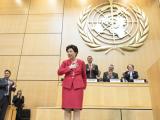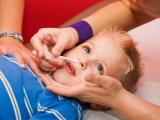Jan 24, 2012
Report shows low H1N1 vaccine uptake in Gen X adults
Although 65% of US adults in their late 30s were at least moderately concerned about flu during the 2009-10 H1N1 influenza pandemic, only about a fifth received H1N1 vaccine, according to a Longitudinal Study of American Youth (LSAY) "Generation X Report" released today by the University of Michigan. Using data collected from more than 3,000 adults aged 36 to 39 during the pandemic, the report found that 58% followed the outbreak fairly closely or very closely. In levels of concern and interest, parents scored higher than non-parents. The report found, however, that only 14% of all respondents had been vaccinated at the time of the survey and that another 8% intended to get the vaccine, for a total of 22%. The results also showed that most respondents believed they were "well informed" or "very well informed" about the pandemic, but they scored only moderately well overall on an Index of Influenza Knowledge focused on the H1N1 pandemic. The data also showed that this age-group found medical professionals and government agencies to be the most trusted sources of information. "These results suggest that young adults in Generation X did reasonably well in their first encounter with a major epidemic," said report author Jon D. Miller in a University of Michigan news release.
Jan 24 LSAY report
Jan 24 University of Michigan press release
Median age of UK patients hospitalized for H1N1 rose last flu season
The median age of patients hospitalized with pandemic 2009 H1N1 flu rose markedly from 2009-10 to 2010-11, according to UK officials reporting in PLoS One on the successful launch of a flu surveillance system. British health officials established the system—the UK Severe Influenza Surveillance System, a sentinel network of 23 healthcare trusts—after the 2009 pandemic to track flu hospitalizations. Among 19 hospitals that had data for both flu seasons, the median age for hospitalized H1N1 patients was 20 in 2009-10 and 35 in 2010-11. The authors conclude, "The Health Protection Agency successfully established a sentinel surveillance system for severe influenza in 2010/11, detecting a rise in influenza cases mirroring other surveillance indicators."
Jan 23 PLoS One study
IOM: Global standards of care needed for disaster response
The world is in need of global "crisis standards of care" to follow when major disasters, including pandemics, strain or overwhelm healthcare systems, according to a summary of a recent workshop sponsored by the Institute of Medicine (IOM) of the US National Academies. "To ensure that fair and equitable care is provided to patients in a catastrophic event, nations and regions need a robust system to guide the public, healthcare professionals and institutions, and governmental entities at all levels," says the report. The workshop was held during the 17th World Congress on Disaster and Emergency Medicine, held in June 2011 in Beijing. The report notes that the IOM issued preliminary guidance for establishing crisis standards of care in 2009 and is expected to issue a full report on the subject this year. The need for standards of care was illustrated by the 2010 earthquake in Haiti, when foreign medical teams faced difficult decisions about whether to use particular trauma techniques while knowing they would have to leave the country before completing follow-up care. Workshop participants said the International Health Regulations treaty, which took effect in 2007, could serve as a blueprint for developing a framework for crisis standards of care. "There will be no global solution, however, before there are local solutions," the summary says.
IOM workshop summary access page


















